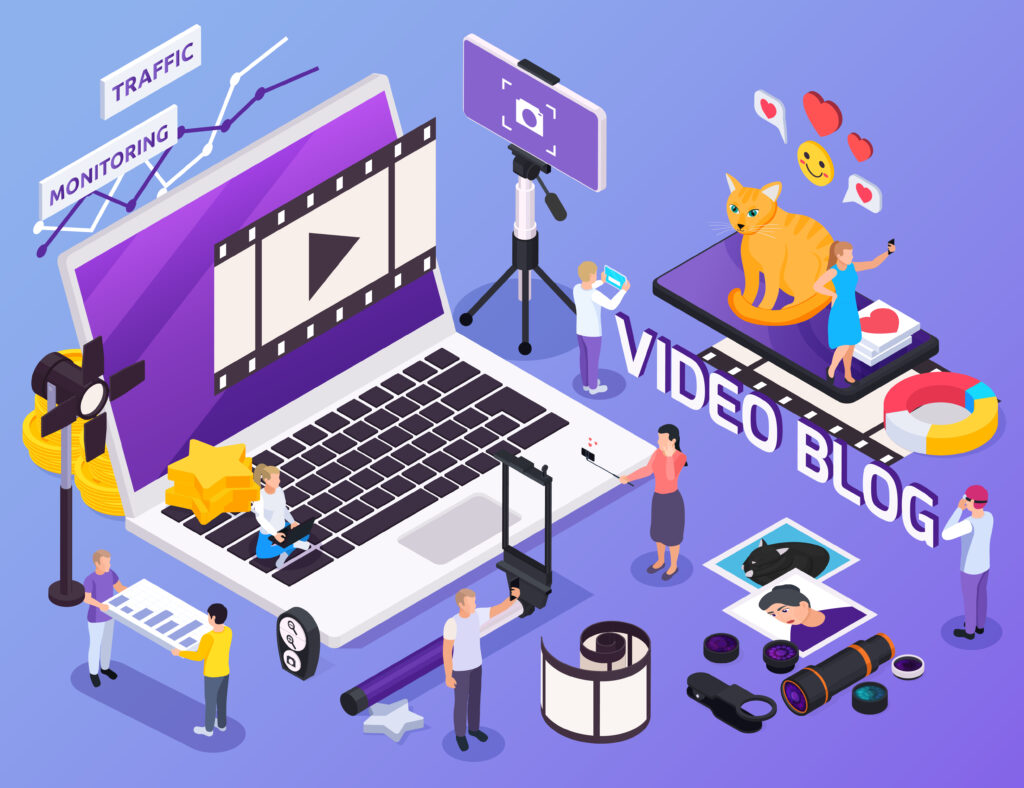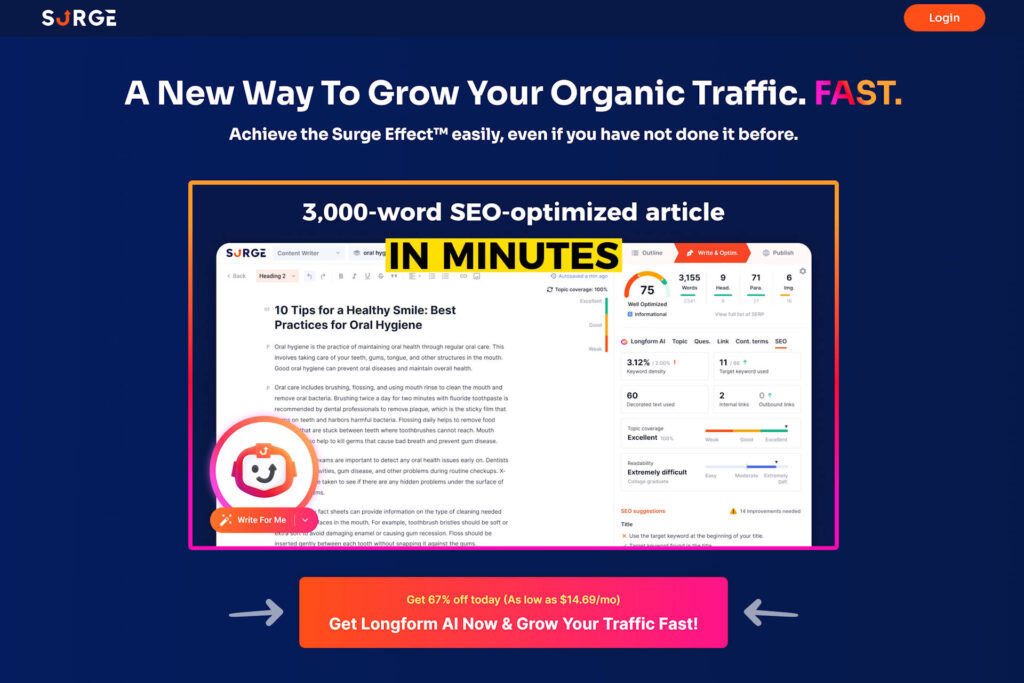
Online advertising trends have evolved significantly over the years, shaping the digital marketing landscape. From the early days of banner ads to the current era of influencer marketing and AI-driven targeting, the industry continues to innovate rapidly.
Understanding these trends is crucial for businesses looking to stay ahead in the competitive online space. In this article, we’ll discover how these trends can impact your marketing efforts and help you reach your target audience more effectively.
Table of Contents
Key Takeaways
- Video Platforms Rising: Embrace video advertising on emerging platforms for wider reach and engagement.
- Prioritize Privacy: Ensure online ads comply with privacy regulations to build trust with consumers.
- Leverage Progressive Web Apps: Utilize PWAs to enhance user experience and drive conversions in online advertising.
- Tap into Ecommerce on Social Media: Capitalize on the growing trend of social commerce for direct sales opportunities.
- Segment Content Strategically: Tailor content to specific audience segments for more personalized and effective marketing campaigns.
- Embrace Conversational Marketing: Engage consumers through interactive and personalized conversations for better brand connections.
Emerging Video Platform Influence
The Rise of Short-Form Video and Diversified Strategies
Influencer marketing, advertising, and brand communication are undergoing a transformation fueled by the rise of short-form video content. Platforms like Instagram Reels and TikTok have exploded in popularity due to their visually appealing and easily digestible format, leading to a surge in user engagement.
Short videos allow influencers to connect with their audience in a quick and entertaining way. By crafting concise and engaging content, they can effectively capture attention and significantly increase their reach.
However, to maximize audience engagement in the long run, a diversified video strategy is crucial. Influencers and businesses should experiment with a variety of video formats beyond just short-form content. This could include:
- In-depth tutorials: Providing educational content that dives deeper into a specific topic.
- Product reviews: Offering detailed analyses and demonstrations of products.
- Behind-the-scenes glimpses: Giving viewers a peek into the influencer’s life or a company’s operations, fostering a sense of connection.
- Interactive challenges: Encouraging audience participation through engaging prompts and activities.
By strategically incorporating these different video formats alongside captivating short-form content, influencers and businesses can create a well-rounded video strategy that fosters long-term audience engagement.
Lead Generation through Video Marketing
Businesses are recognizing the potential reach of video marketing for lead generation. Videos have become a key tool in attracting and converting leads. They allow businesses to showcase products or services creatively, making them more appealing to potential customers.
Video marketing offers a dynamic way to engage with audiences, providing a visual representation that is often more memorable than text-based content. Through strategic video campaigns, businesses can effectively communicate their brand message and drive conversions.

Privacy and Security in Online Ads
Privacy Regulations and Adaptation
Online advertising is facing a new reality shaped by stricter privacy regulations like GDPR and CCPA. These regulations limit data collection and targeting capabilities for advertisers, impacting traditional personalization strategies.
To navigate this shift, brands must obtain explicit user consent before collecting data. This has led to the rise of gated offers, where brands provide exclusive content or deals in exchange for user information. This approach fosters transparency and trust, as users understand what data they are sharing and receive value in return.
Furthermore, regulations require businesses to be upfront about their data practices and empower consumers to control their information. In response, online advertisers are implementing measures such as clearer privacy policies and opt-out options to ensure compliance and maintain consumer trust.
Progressive Web Apps Impact
A User-Centric and Cost-Effective Solution
Progressive Web Apps (PWAs) are revolutionizing online advertising by offering a user-centric and cost-effective approach. Unlike traditional websites, PWAs deliver a seamless user experience with instant loading times, eliminating the need for downloads and ensuring smooth browsing even on slow connections. This focus on speed reduces bounce rates and keeps users engaged on the platform.
Additionally, PWAs provide the added benefit of offline access, allowing users to interact with content even in areas with unreliable internet – a valuable feature for businesses targeting global audiences.
The cost-effectiveness of PWAs makes them a compelling choice for businesses. Developed using web technologies like HTML, CSS, and JavaScript, PWAs leverage a single codebase that functions across all devices. This eliminates the need for separate development for different platforms, significantly reducing development costs compared to native apps.
Furthermore, PWAs bypass app store distribution fees associated with platforms like Google Play Store or Apple App Store. By opting for PWAs, businesses can achieve significant savings on both development and maintenance costs.
Increased Engagement Opportunities
PWAs offer businesses an opportunity to enhance user engagement through push notifications. These notifications allow businesses to reach out to users directly on their devices, providing updates on new products, promotions, or personalized recommendations. By leveraging push notifications effectively, businesses can drive traffic to their website or app and boost conversions.
PWAs enable businesses to re-engage with users who have abandoned their carts or have not visited the platform in a while. Through targeted push notifications based on user behavior and preferences, businesses can bring back lost customers and encourage repeat purchases. This increased engagement potential sets PWAs apart from traditional websites and native apps.
E-commerce Trends on Social Media
Social Commerce
Social media platforms have become pivotal in the evolution of e-commerce, offering brands and businesses a direct channel to reach consumers. With features like Facebook Marketplace and Instagram Shopping, users can now seamlessly browse and purchase products without leaving the platform. This integration of shopping capabilities within social media has transformed the way people shop online.
The convenience and accessibility of social commerce have significantly impacted consumer behavior, leading to an increase in impulse purchases and streamlined shopping experiences. Brands leveraging these features witness higher engagement rates and improved conversion metrics, showcasing the effectiveness of incorporating e-commerce into social media strategies.
Influencer Marketing
Influencer marketing plays a crucial role in enhancing brand visibility and driving sales on social media platforms. Collaborating with influencers allows brands to tap into their large followings and target specific people based on their interests and demographics. By promoting products authentically through influencers, brands can establish credibility and trust among their audience.
Influencers act as key trendsetters, influencing purchasing decisions and shaping consumer preferences. Their ability to create engaging content that resonates with their followers makes them valuable partners for brands looking to expand their reach in the competitive e-commerce landscape. As influencers continue to wield significant influence over online audiences, brands are increasingly investing in influencer partnerships to amplify their marketing efforts.

User-Generated Content
User-generated content (UGC) is another rising trend in e-commerce on social media platforms. Brands encourage customers to share their experiences through reviews, photos, and videos, creating a sense of community around their products. UGC not only fosters authenticity but also serves as a powerful tool for social proof, influencing people’s purchasing decisions based on real-life experiences shared by others.
Strategies for Content Segmentation
Personalized Recommendations
Personalized content recommendations play a crucial role in targeting specific audience segments effectively. By analyzing user behavior and preferences, platforms can suggest content that aligns with individual interests. For example, streaming services like Netflix use this strategy to recommend movies and shows based on viewing history.
Creating algorithms that consider factors such as past interactions, demographics, and browsing habits enables platforms to deliver tailored content suggestions. This approach enhances user experience by presenting relevant information, leading to increased engagement and retention rates. Moreover, personalized recommendations can significantly impact conversion rates by guiding users towards products or services that match their needs and preferences.
Tailored Messaging
Crafting tailored messaging involves customizing communication based on specific audience segments. By understanding the unique characteristics and preferences of different groups, businesses can create messages that resonate with each segment effectively. For instance, email marketing campaigns often utilize tailored messaging by sending personalized emails to subscribers based on their behavior and interests.
Implementing tailored messaging allows companies to establish a more personalized connection with their audience, leading to higher levels of engagement and brand loyalty. By addressing the diverse needs of various segments through customized communication, businesses can drive conversions and foster long-term relationships with customers.
Benefits of Content Segmentation
- Improved Engagement: Content segmentation enhances user engagement by delivering relevant information to target audiences, capturing their interest effectively.
- Enhanced Conversion Rates: By tailoring content to specific audience segments, businesses can increase conversion rates by providing personalized experiences that cater to individual needs.
- Better Customer Retention: Segmenting content allows companies to build stronger relationships with customers by offering valuable and personalized interactions.
Conversational Marketing Evolution
Chatbots Integration
Chatbots have revolutionized customer interactions, offering instant responses and personalized solutions. They cater to the rising demand for quick and efficient communication channels.
The integration of chatbots in online advertising has reshaped customer engagement strategies. By leveraging voice search capabilities, chatbots provide a seamless experience for users seeking information.
AI-Powered Tools Advancement
AI-powered tools play a pivotal role in enhancing conversational marketing efforts. These tools analyze user data to deliver tailored recommendations and responses, creating a more engaging interaction.
The use of AI algorithms enables advertisers to understand consumer behavior patterns accurately. This insight helps in crafting targeted campaigns that resonate with the audience’s preferences.

Real-Time Customer Engagement
Real-time conversations are becoming the go-to way for brands to connect with their audience. The ability to engage customers instantly fosters trust and loyalty, leading to increased customer retention rates.
Personalized interactions based on micro-moments enhance the overall customer experience. Tailoring content according to individual preferences ensures relevance and boosts brand perception.
AI in Digital Marketing Trends
Data Analysis
AI plays a crucial role in optimizing digital marketing campaigns through advanced data analysis techniques. By leveraging AI algorithms, marketers can analyze vast amounts of data to identify trends and patterns that inform strategic decisions.
Utilizing AI-powered tools for data analysis enables marketers to gain valuable insights into consumer behavior, preferences, and engagement metrics. This information is instrumental in crafting targeted marketing strategies that resonate with the target audience.
Predictive Modeling
In the realm of digital marketing, predictive modeling powered by AI is revolutionizing how brands anticipate consumer behavior. By utilizing historical data and machine learning algorithms, marketers can forecast future trends and tailor their campaigns accordingly.
Predictive modeling enables marketers to anticipate customer needs, personalize content, and optimize advertising strategies for maximum impact. This proactive approach helps in boosting conversion rates and enhancing overall campaign performance.

Personalized Marketing
The integration of AI technologies in digital marketing has paved the way for personalized marketing at scale. Through machine learning algorithms, marketers can create hyper-targeted campaigns tailored to individual preferences, behaviors, and demographics.
Personalized marketing not only enhances customer engagement but also fosters loyalty and brand advocacy. By delivering relevant content to consumers based on their unique characteristics, brands can establish meaningful connections and drive long-term relationships.
Automation Efficiency
AI-driven automation tools are streamlining digital marketing processes by automating repetitive tasks such as email campaigns, ad placements, and content scheduling. This automation not only saves time but also ensures consistency and accuracy across various channels.
Automating tasks through AI technology allows marketers to focus on strategic initiatives while improving overall campaign efficiency. By reducing manual intervention and human errors, AI-powered automation contributes to enhanced ROI and campaign success.
Omnimarketing for Brands
Seamless Customer Experiences
Omnimarketing revolves around integrating various marketing channels to provide customers with a cohesive and consistent brand experience. By leveraging multiple touchpoints, brands can deliver personalized messages tailored to individual preferences.
This approach enables companies to engage with customers at different stages of the buyer’s journey, ensuring a seamless transition from awareness to purchase. For instance, a customer may first encounter a brand through a social media ad, then receive a personalized email offering them a discount on their desired product.
Building Brand Loyalty
One of the key advantages of omnimarketing is its ability to foster strong brand loyalty. By maintaining a consistent presence across channels, brands can establish a deeper connection with their audience. This consistency reinforces brand values and messaging, building trust and loyalty over time.
Moreover, omnimarketing allows brands to create personalized experiences for customers, making them feel valued and understood. For example, by tracking customer interactions across channels, companies can tailor their marketing efforts to suit individual preferences and behaviors.

Driving Conversions
Incorporating omnimarketing strategies can significantly impact conversion rates for brands. By engaging customers through various touchpoints, companies increase the likelihood of converting leads into paying customers. This approach helps streamline the customer journey, guiding individuals towards making informed purchasing decisions.
Furthermore, omnimarketing enables brands to deliver targeted messages based on customer behavior and interests. For instance, an e-commerce company may use data from past purchases to recommend relevant products to customers, increasing the chances of conversion.
Developing Professional Marketing Strategies
Market Research
Effective marketing strategies begin with thorough market research. By understanding industry trends, consumer behaviors, and competitor strategies, businesses can make informed decisions.
Investing time and resources in market research allows businesses to identify new opportunities and gaps in the market. This knowledge enables them to tailor their marketing efforts to meet the specific needs of their target audience.
Target Audience Analysis
Analyzing the target audience is crucial for crafting successful marketing strategies. By gaining insights into the demographics, preferences, and pain points of their clients, businesses can create personalized campaigns that resonate with their audience.
Understanding the motivations and behaviors of potential clients helps businesses tailor their messaging and offerings to address specific needs effectively. This targeted approach increases the likelihood of converting leads into loyal customers.
Goal Setting
Setting clear and achievable goals is essential for guiding marketing strategies towards success. By defining specific objectives such as increasing brand awareness, generating leads, or driving sales, businesses can measure the effectiveness of their campaigns.
Establishing business goals provides a roadmap for decision-making and resource allocation. It also allows businesses to track progress, identify areas for improvement, and celebrate milestones along the way.
Continuous Optimization
Continuous optimization is key to maximizing the impact of marketing campaigns. By monitoring performance metrics such as conversion rates, click-through rates, and return on investment (ROI), businesses can identify what works best for their audience.
Optimizing campaigns based on real-time data ensures that businesses stay agile and responsive to changing market dynamics. This iterative approach allows for quick adjustments to tactics, messaging, and targeting to achieve optimal results.

Final Remarks
The future of digital marketing is all about personalization, automation, and providing a seamless customer experience across all touchpoints. By embracing the latest trends and tools, businesses can build stronger brand loyalty, optimize their campaigns, and achieve their marketing goals in a competitive landscape.
However, it’s important to remember that successful marketing strategies require a strong foundation in market research, target audience analysis, and clear goal setting. By combining innovative tactics with a solid understanding of the market and their customers, businesses can navigate the ever-changing digital marketing world and achieve lasting success.
Related Article:
The following article may contain the author’s opinions and interpretations of the subject matter. Any of the products, services, or platforms mentioned is not sponsored or affiliated.
Featured Image courtesy of rawpixel.com on Freepik

